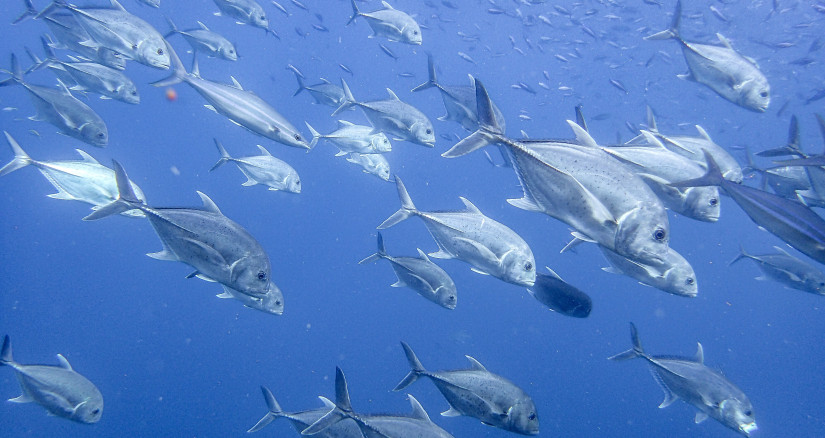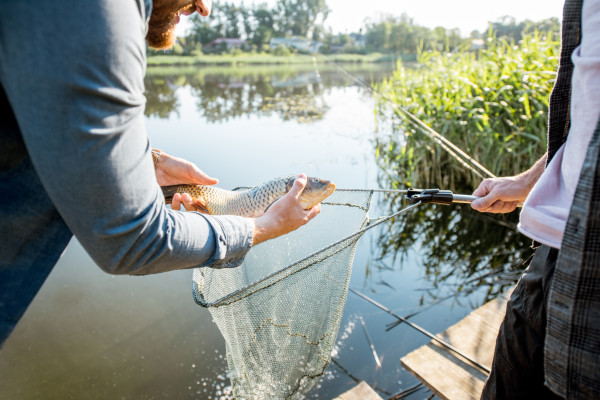
Untapped Potential? Navigating the Murky Waters of Invasive Species in Pet Food
The pet food industry is ever evolving and constantly seeking novel and sustainable ingredient sources. Could the answer lie in an unlikely place—the very aquatic invaders causing ecological disruption to our waterways?
Imagine turning an ecological challenge into a nutritious meal or snack for our pets. Species like the lionfish, the armored catfish, the tenacious green crab, and the “flying” silver carp have begun to enter the pet food world. As of the most recent articles, another invasive species is emerging, one even more dangerous to water and land: the notorious snakehead fish.
Now, I know what you might be thinking: “Snakehead? Sounds like something out of a low-budget sci-fi flick.” You wouldn’t be entirely wrong. These elongated predators, with their distinctive snake-like head and sharp teeth, are the poster children for invasive fish gone wild. Native to parts of Asia and Africa, they’ve established themselves in various waterways across the globe, from canals to ponds—yes, ponds, because if the look of these fish wasn’t terrifying enough, they can breathe air to live on land for a few days, allowing them to travel to other inland water sources.
These aquatic interlopers, often introduced through human activities—the unintended consequences of the exotic pet trade, accidental releases, or even misguided attempts to stock waterways—are indeed causing significant problems in delicate ecosystems. However, within this ecological dilemma lies a potential solution. The sheer abundance, or biomass, of certain invasive populations represents a significant yet largely untapped protein source. This presents a unique opportunity: could we transform these ecological liabilities into nutritious and sustainable ingredients for our pets?

Photo by RossHelen
Before Diving In
For pet food brands and pet owners alike, it's crucial to understand that venturing into uncharted waters requires careful consideration. When we delve into the nutritional aspects of these wild, invasive species, we enter somewhat murky waters. While anecdotal evidence might suggest nutritional benefits, it's vital to approach such claims with a science-driven approach. Unlike conventionally farmed fish or established protein sources that undergo rigorous testing and adhere to strict quality control measures, the nutritional content of wild, invasive species can fluctuate considerably. Factors such as their natural diet, the water quality of their environment, and even the time of year can influence their protein, fat, and micronutrient profiles.
More importantly, most of these species have not undergone safety studies or been established as Generally Recognized As Safe (GRAS) for pets or humans. Without fully understanding the nutritional profile of invasive fish, something could lurk that is even more terrifying than the look of this fish—nutritional imbalance. For example, do we know the fat-soluble vitamin content of the fish, or are we potentially overfortifying diets?
Furthermore, safety is paramount. Thorough investigations are essential for understanding the potential presence of toxins or heavy metals that these species may accumulate in their natural (or, in the case of invasive species, found) habitats. Robust safety studies and comprehensive toxicological assessments must be conducted before any invasive species can be considered a viable and safe ingredient in pet food. Understanding their nutritional profiles is equally critical to ensuring balanced and complete diets for pets.
The path forward can be frustrating for pet food brands with a genuine interest in contributing to the fight against invasive species. Significant resources must be allocated to consumer education to overcome potential apprehension towards these novel ingredients. Moreover, the current framework for sustainability certifications, such as the Marine Stewardship Council (MSC) logo, presents a Catch-22. The MSC, which sets standards for sustainable fishing practices, seems like the perfect logo for brands utilizing invasive species; however, the often-smaller initial volumes of harvested invasive species can prevent them from meeting the MSC's certification requirements. This creates a vicious cycle where brands struggle to gain recognition for their sustainable efforts, hindering market growth.
Finally, the economic realities of utilizing invasive species can also be surprising. One might assume that turning a pest into a product would result in lower costs. However, the infrastructure needed to harvest and process these species often requires significant upfront investment. Existing fisheries are typically not equipped to handle these non-traditional catches, necessitating the construction or modification of specialized docks, fishing vessels, and processing facilities. These added costs can, unfortunately, translate to a higher price point for consumers.

Photo by laroshenkoM
Reeling It In
Despite these challenges, the potential benefits of responsibly incorporating invasive species into pet food are significant. For pet food brands eager to explore this innovative avenue, the key lies in seeking specialized expertise.
Navigating the complexities of sourcing, rigorous safety testing, and comprehensive nutritional analysis demands a deep understanding of both ecological principles and animal nutrition science. Consultants with this specialized knowledge are well-equipped to guide brands through the necessary research and development processes. By partnering with the experts at BSM Partners, pet food companies can responsibly and effectively explore the incorporation of invasive species into their formulations, ultimately contributing to both environmental sustainability and the health and well-being of the pets we cherish.
The journey may be complex, but the potential rewards for our planet and our pets make it a path worth exploring.
Follow us on LinkedIn for the latest updates on all things happening here at BSM Partners.
About the Author
Dr. Stephanie Clark is a board-certified companion animal nutritionist, veterinary nurse and nutrition specialist, a pet owner, and a mother who had a baby during the formula shortage. She has spent the past almost two decades dedicating her career to the welfare of pets, livestock, and wildlife. She currently provides nutritional consultations for veterinary clinics and works in the pet food industry.
This content is the property of BSM Partners. Reproduction or retransmission or repurposing of any portion of this content is expressly prohibited without the approval of BSM Partners and is governed by the terms and conditions explained here.